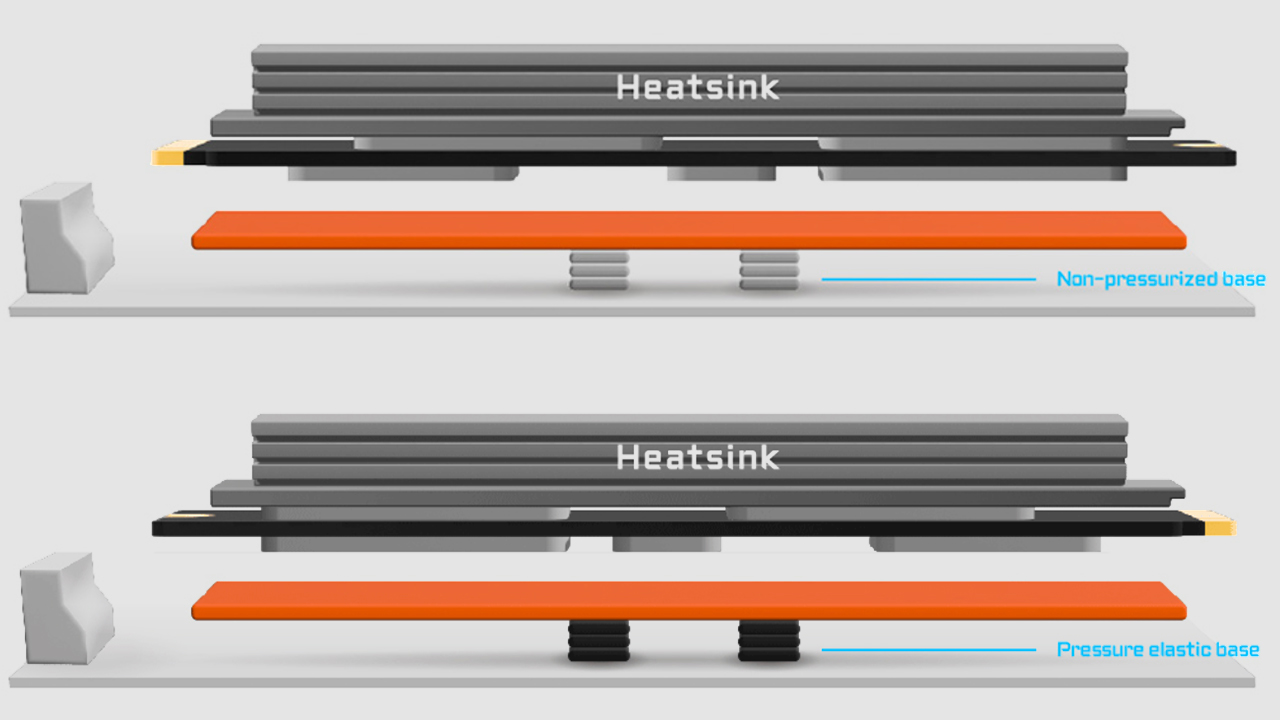
Gigabyte has added pressurized thermal pads to M.2 slots for SSDs on its latest Aorus Stealth Ice motherboards (via Uniko's Hardware) to maximize heat dissipation of high-end SSDs. The motherboard maker claims that its pressurized thermal pad may reduce SSD temperature by 12 degrees Celsius, though it admits that the effect depends on multiple factors.
Thermals often constrain the performance of high-end SSDs in an M.2 form-factor, as both the controller and memory packages tend to heat up under high loads. Most high-end drives come with a pre-installed heat spreader, and many high-end motherboards come with their thermal solutions for SSDs. However, these thermal solutions are mainly designed to cool down the controller and the upper side of the drives, whereas backplates are tailored for single-sided or double-sided drives. Apparently, Gigabyte has found a flexible solution. Literally.
Gigabyte’s EZ-Flex solution, introduced on its B850 Aorus Stealth Ice motherboard, addresses these shortcomings by combining pressurized thermal pads with a spring-loaded, flexible backplate. This setup adapts to the thickness of both single- and double-sided M.2 SSDs, maintaining uniform pressure and ensuring better thermal contact on both sides of the drive. As a result, SSD temperatures can be reduced by up to 12°C, helping to prevent thermal throttling and sustain high performance during intensive workloads.
Gigabyte’s EZ-Flex design not only improves thermal performance and enhances compatibility with both single- and double-sided SSDs, but it also ensures more consistent mechanical pressure for better stability and reduces the risk of installation errors due to its adaptive fit. As a bonus, such a design could reduce SSD bending after prolonged usage. In addition, lowering temperatures helps extend the lifespan of SSD components. It minimizes performance throttling under sustained workloads, making it especially beneficial for users handling large data transfers or demanding applications.
It remains to be seen whether EZ-Flex will now be a part of all Gigabyte’s motherboards, or will only be featured on premium solutions. Considering that the B850 is not a premium platform, EZ-Flex will likely be a widespread feature on Gigabyte mainboards. After all, just two springs are not expensive, right?
Follow Tom's Hardware on Google News to get our up-to-date news, analysis, and reviews in your feeds. Make sure to click the Follow button.







